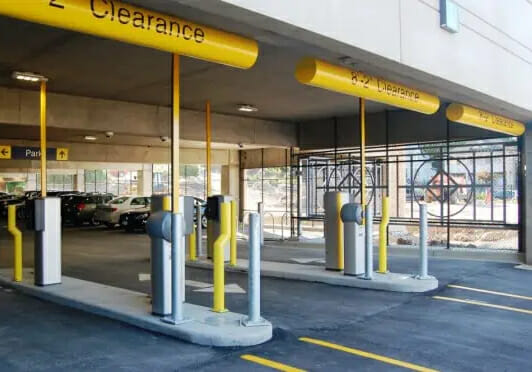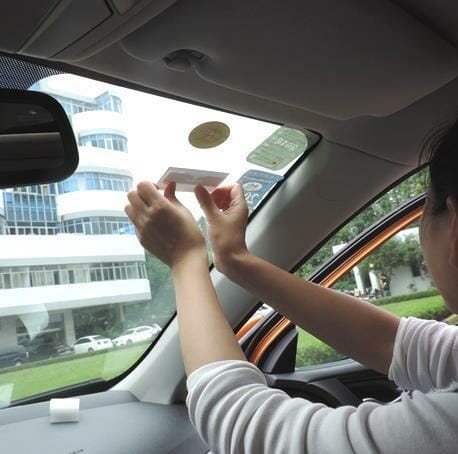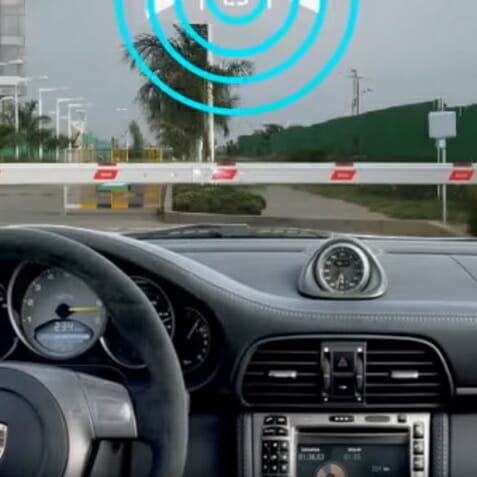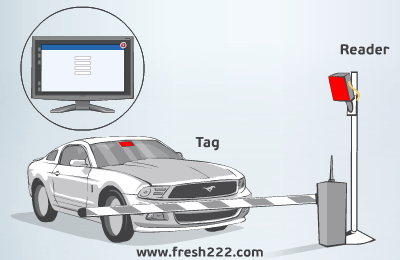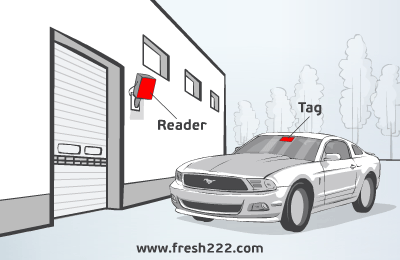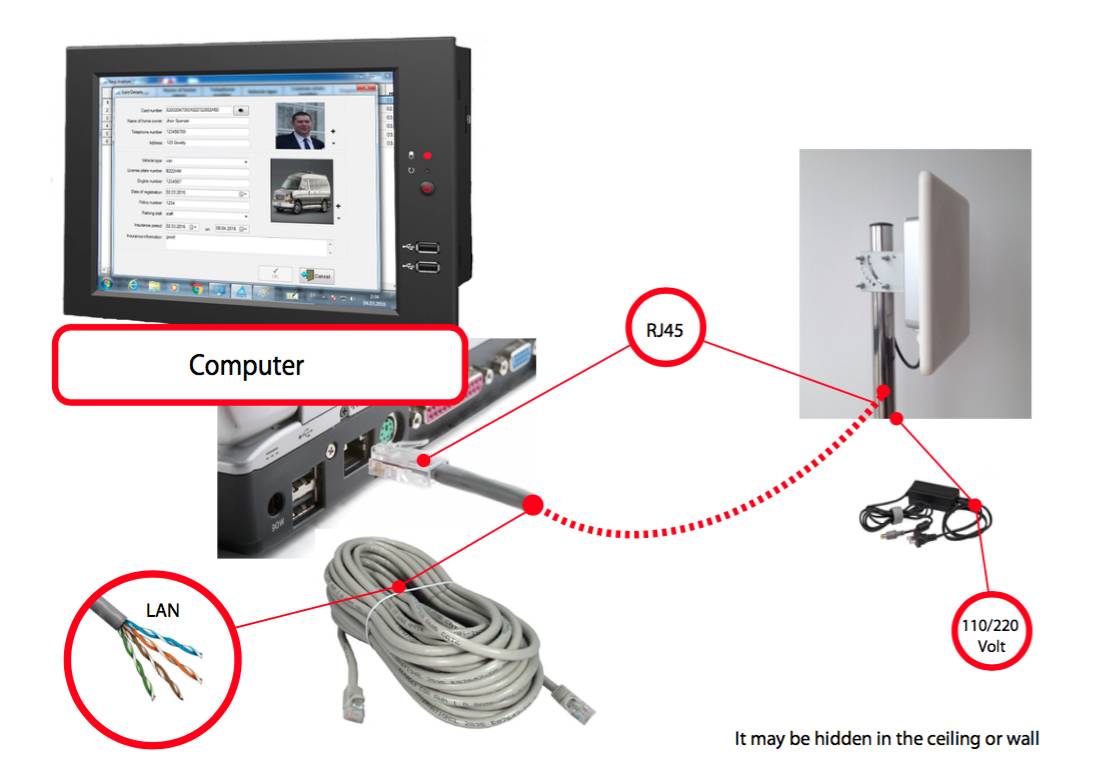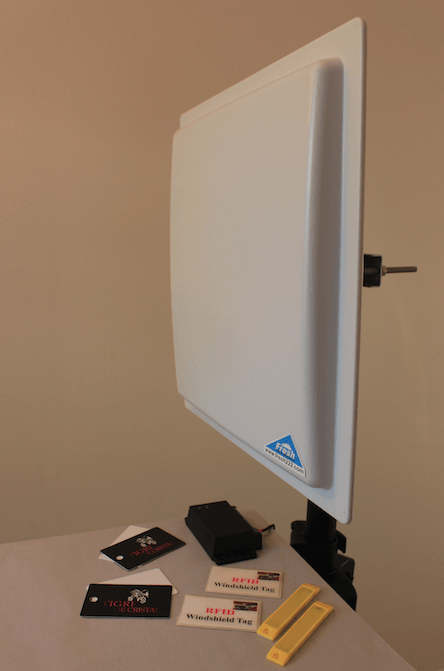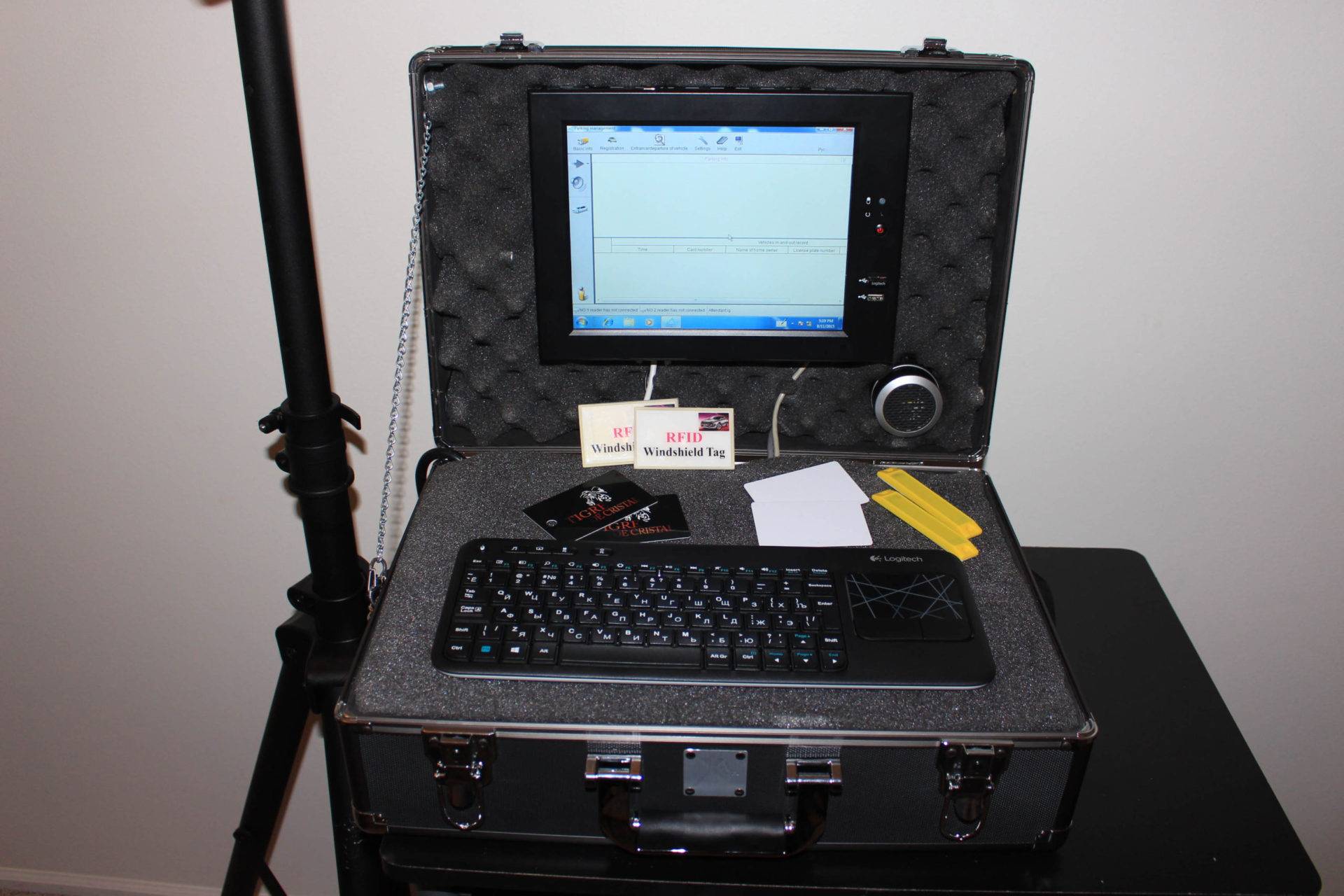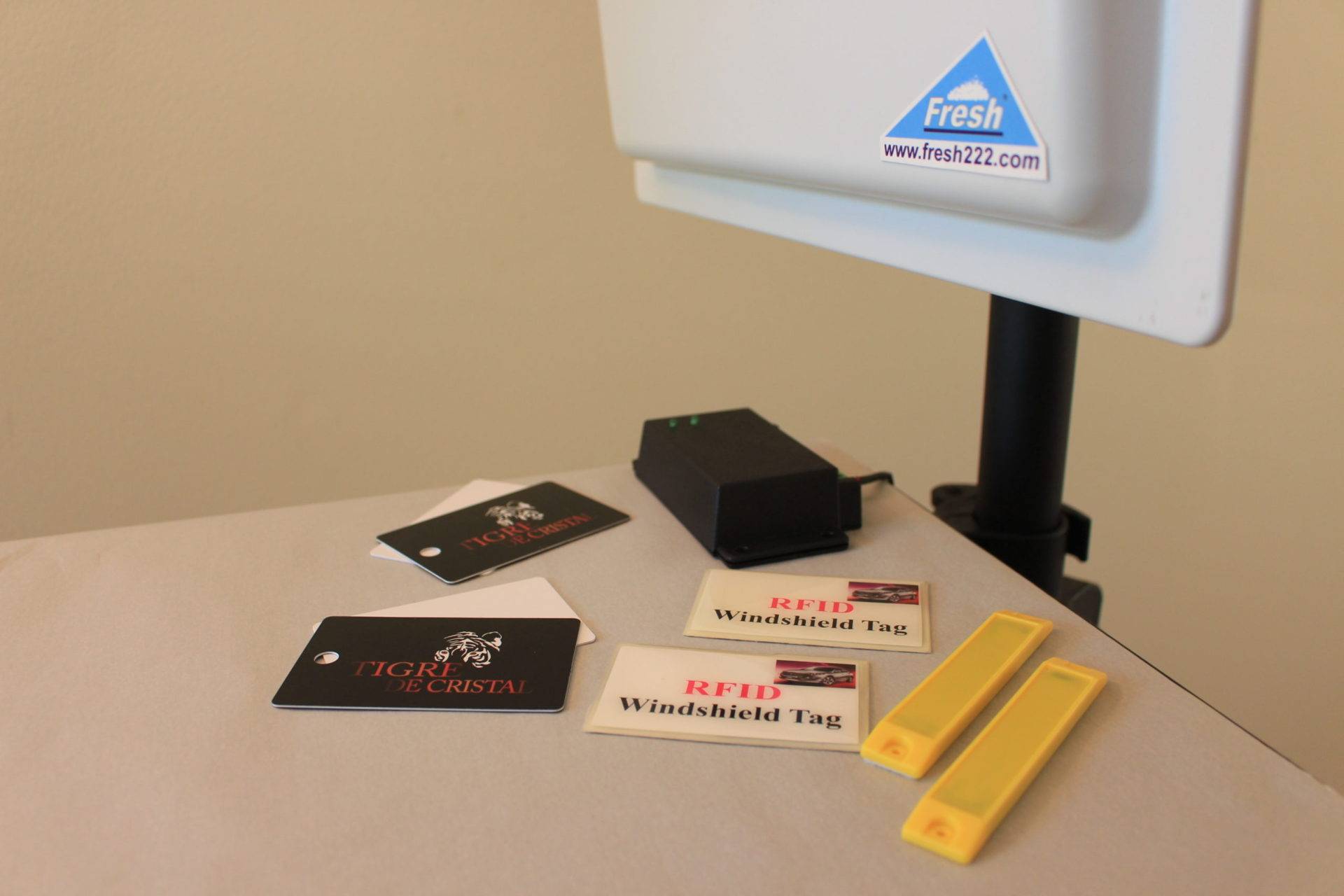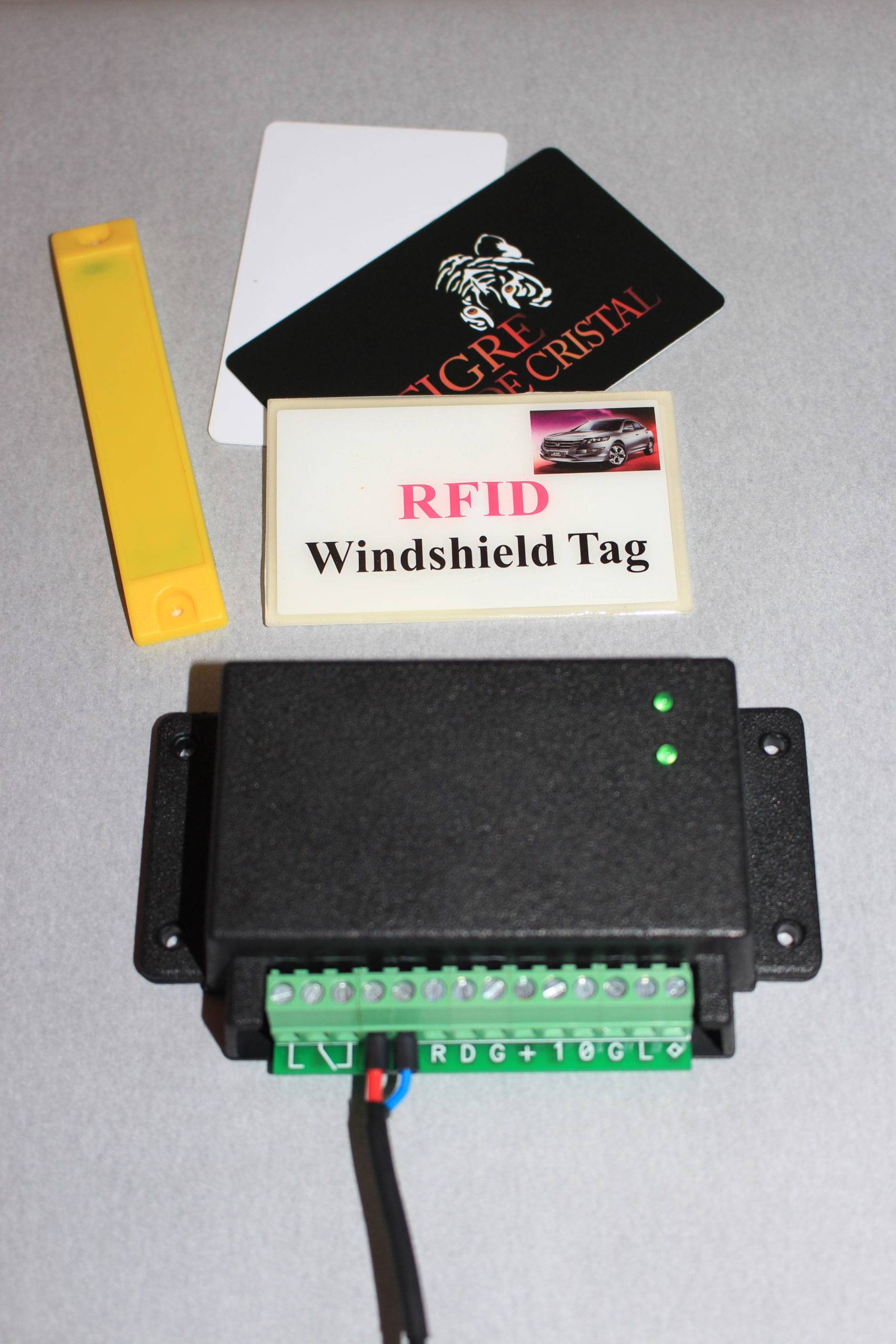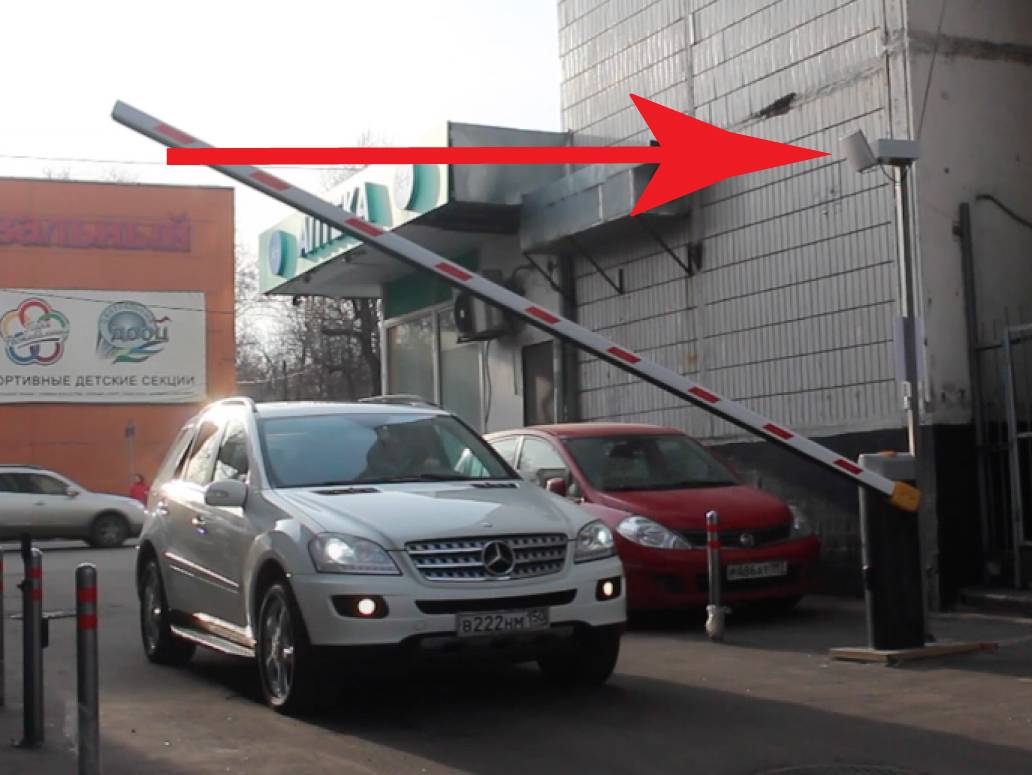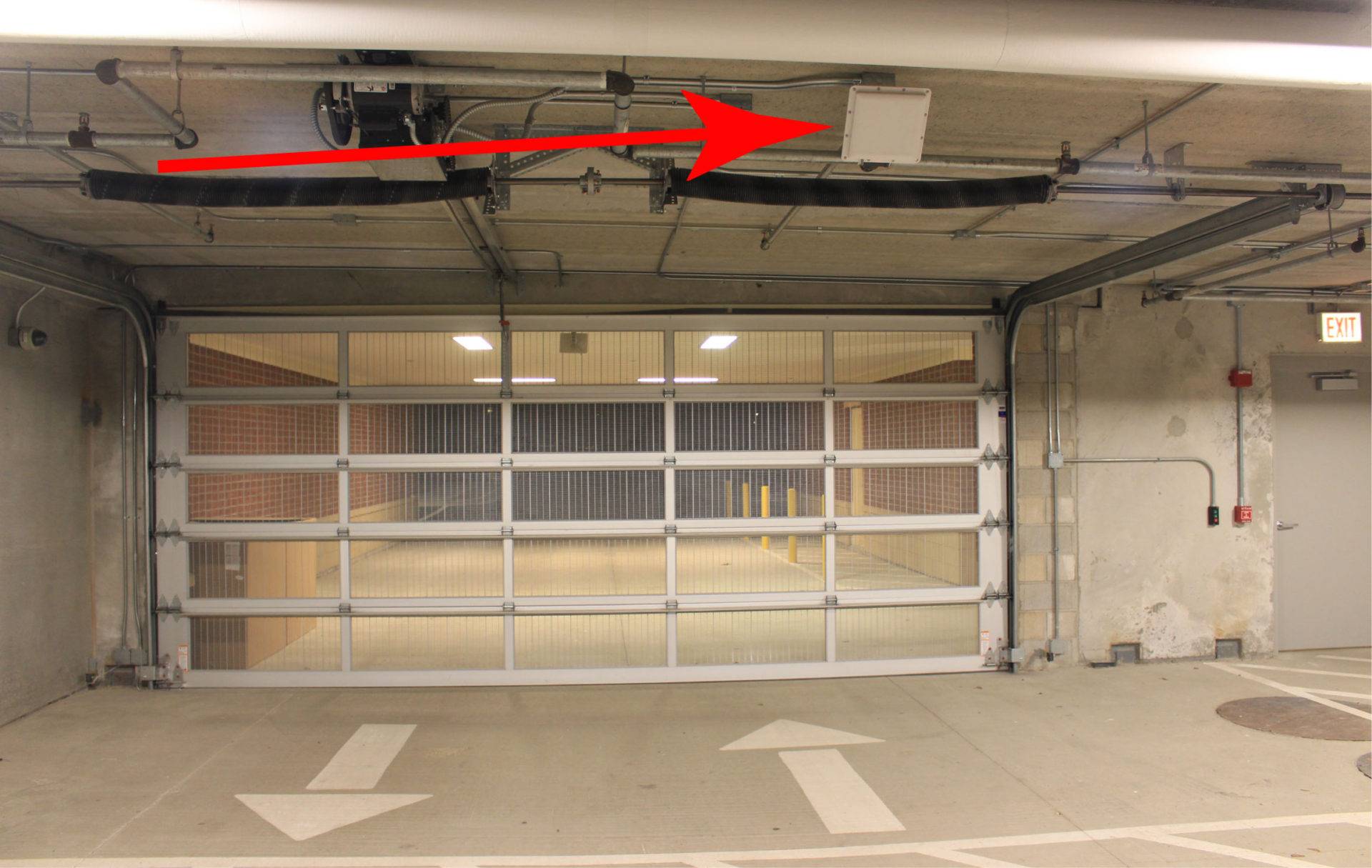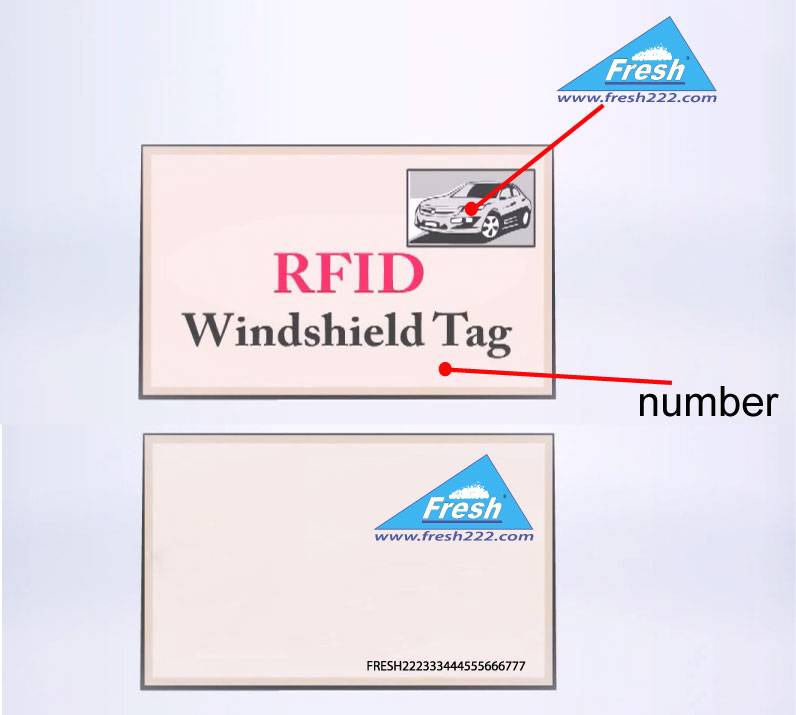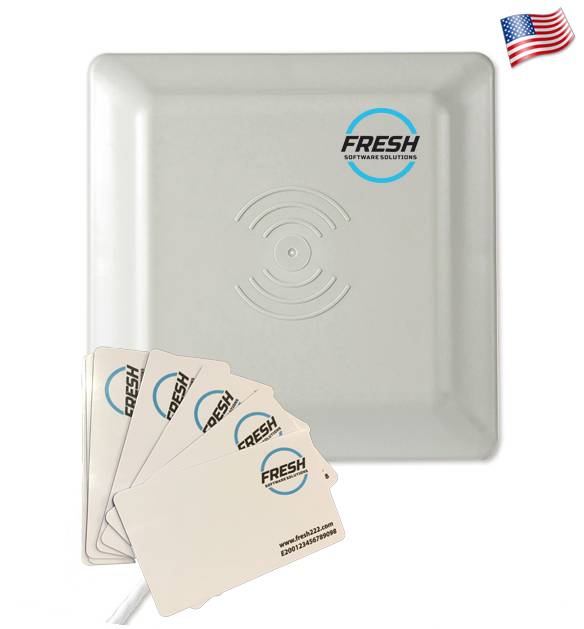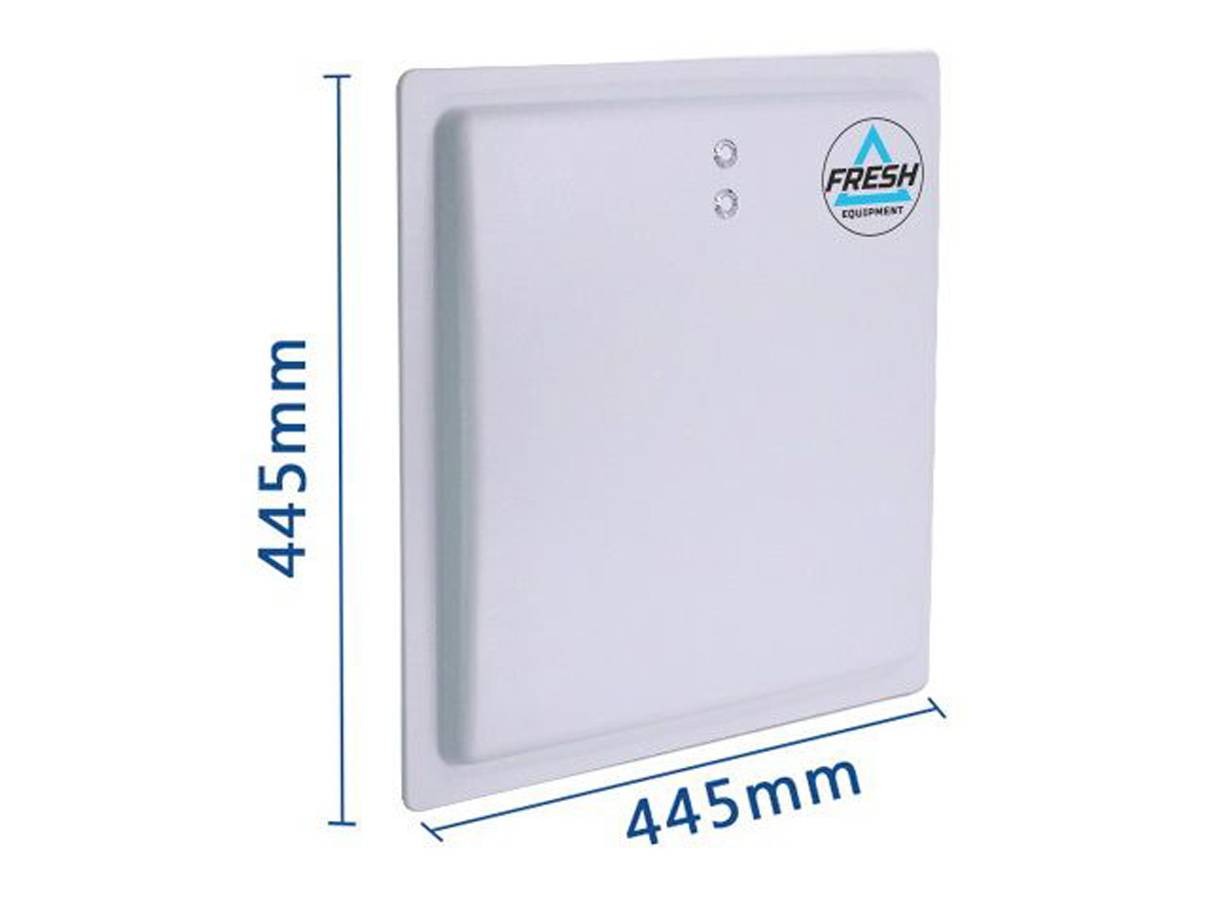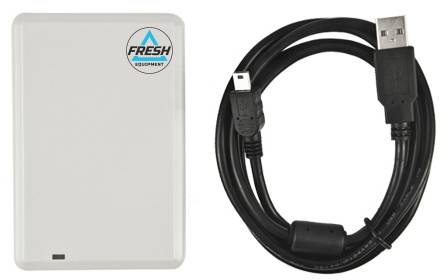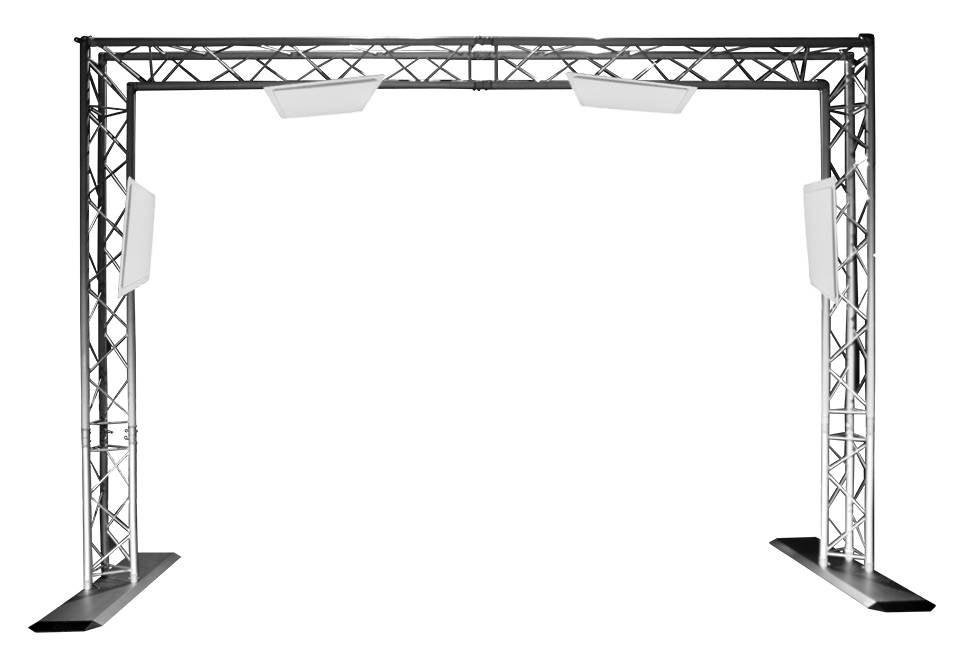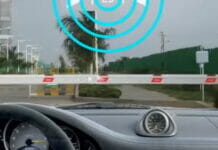Residential Garage Access Control Systems are security measures designed to regulate and monitor access to residential garages. These systems are installed to enhance the security and safety of a residential property by controlling who can enter or exit the garage area.
The primary purpose of a Residential Garage Access Control System is to restrict unauthorized individuals from gaining access to the garage, thereby protecting valuable belongings such as vehicles, tools, and other personal items stored within. These systems provide homeowners with peace of mind, knowing that their garage is secure and protected from potential theft or vandalism.
PRICE / Buy Access Control System, range 26ft / 8m
PRICE / Buy Access Control System, range 49ft / 15m
Various Types of Residential Garage Access Control Systems
Keypad Entry Systems: These systems require users to input a unique code or PIN on a keypad to gain access. The code can be changed periodically to maintain security.
Remote Control Systems: These systems utilize handheld remote controls to open or close the garage door. The remote control transmits a signal to a receiver located in the garage, activating the door mechanism.
Biometric Systems: Biometric access control systems use unique physical characteristics, such as fingerprints or retinal patterns, to grant access. Homeowners’ authorized biometric data is stored and matched with the presented biometrics for authentication.
Proximity Card Readers: Proximity card access control systems operate by presenting a special card or key fob to a card reader located near the garage entrance. The reader scans the card’s embedded information and grants access if authorized.
Smartphone Apps: Some modern access control systems allow homeowners to control garage access through dedicated smartphone applications. These apps use wireless connectivity to communicate with the garage door opener, providing convenient and secure access management.
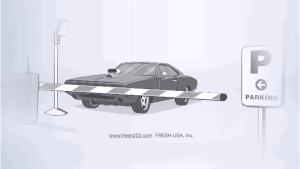
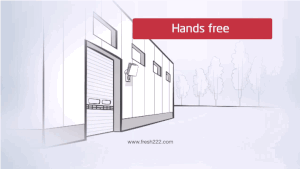
Residential Garage Access Control Systems not only enhance security but also provide additional features such as remote monitoring and activity logging. These systems can record access attempts, track usage patterns, and send notifications to homeowners when unauthorized access is detected. By implementing a Residential Garage Access Control System, homeowners can protect their property, prevent unauthorized entry, and enjoy increased convenience and peace of mind regarding the security of their residential garage.
How RFID UHF Technology Works For Residential Garage Systems
RFID UHF (Ultra-High Frequency) technology operates as a key component in Residential Garage Access Control Systems, facilitating secure and convenient access to the garage. Here is an explanation of how RFID UHF technology works in such systems:
-
- RFID Tags: Each authorized individual is assigned an RFID tag, which is a small electronic device containing a unique identification number or code. These tags can be in the form of key fobs, cards, or even integrated into smartphones.
- Garage Reader: A garage reader equipped with RFID UHF technology is installed near the garage entrance. This reader consists of an antenna and a scanning mechanism that detects and reads the RFID tags within its range.
- Tag Detection: As an authorized individual approaches the garage entrance, the RFID reader detects the presence of RFID tags in its vicinity. The reader emits radio waves through its antenna, creating an electromagnetic field.
- Power Harvesting: When an RFID tag enters the electromagnetic field, it harnesses a small amount of power from the reader’s radio waves. This power is used to activate the tag’s circuitry.
- Tag Response: Once activated, the RFID tag sends back a radio signal that includes its unique identification information. This signal is received by the reader’s antenna, which then relays the information to the access control system.
- Authentication: The access control system compares the received identification information with its database of authorized tags and verifies the authenticity and authorization status of the tag. If the tag is valid, the system proceeds with granting access to the garage.
- Gate Operation: Upon successful authentication, the access control system sends a command to the garage door opener or gate mechanism to open or close. The garage door or gate responds accordingly, allowing the authorized individual to enter or exit the residential garage.
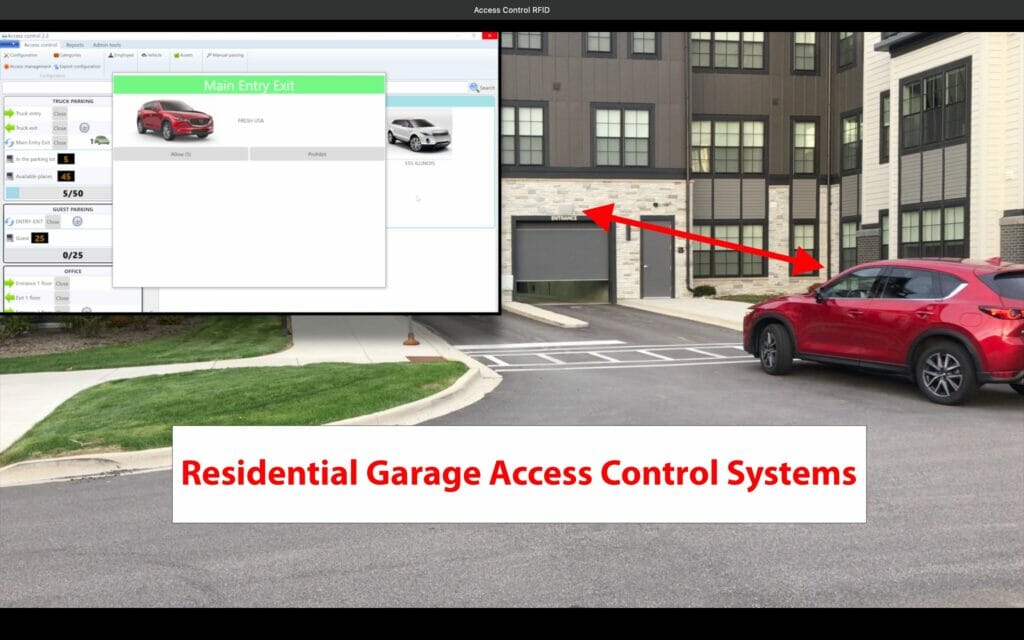
Residential Garage Access Control System
Detailed About RFID Parking Systems
RFID UHF technology offers several benefits in Residential Garage Access Control Systems:
- Long-Range Detection: RFID UHF systems can detect and read RFID tags from a distance, providing convenience and allowing for hands-free access as individuals approach the garage.
- High-Speed Scanning: UHF technology enables rapid scanning of multiple RFID tags simultaneously, ensuring efficient and smooth garage access, even during periods of high traffic.
- Secure Authentication: RFID UHF systems employ encryption and authentication protocols to ensure that only authorized individuals with valid RFID tags can gain access to the garage, enhancing security.
- Scalability: RFID UHF technology can be easily integrated with other security systems or technologies, providing a comprehensive access management solution for residential garages.
By utilizing RFID UHF technology, Residential Garage Access Control Systems offer a reliable, secure, and user-friendly solution for managing access to the garage, enhancing convenience and providing peace of mind for homeowners.
Why the RFID UHF Residential Garage Systems Better Then Others
In conclusion, RFID UHF Residential Garage Access Control Systems offer several advantages that make them superior to other access control systems for residential garages. Here’s a summary of why RFID UHF systems are better:
- Convenience: RFID UHF systems provide a hands-free and contactless experience for homeowners. Authorized individuals can easily access the garage by simply having their RFID tag in their possession, without the need to manually input codes, use remote controls, or physically interact with keypads.
- Long-Range Detection: With UHF technology, RFID tags can be read from a distance, allowing for seamless access as users approach the garage. This eliminates the need for precise tag placement or close proximity to the reader, providing greater convenience and ease of use.
- Enhanced Security: RFID UHF systems offer advanced security features such as encryption and tamper resistance. These measures help protect against unauthorized cloning or tampering of RFID tags, ensuring the integrity of the access control system and safeguarding the garage against potential breaches.
- Scalability and Integration: RFID UHF systems can easily integrate with other security components and technologies, such as video surveillance, intercom systems, or smartphone apps. This allows homeowners to create a comprehensive and interconnected security ecosystem for their residential garage.
- Efficiency and Speed: UHF technology enables rapid scanning and identification of multiple RFID tags simultaneously. This high-speed operation ensures smooth and efficient garage access even during peak usage periods, minimizing wait times and maximizing convenience for homeowners and their guests.
- User-Friendly Experience: RFID UHF systems offer a user-friendly experience by eliminating the need for manual input or physical interaction with devices. Homeowners and authorized individuals can effortlessly access the garage with a simple presence of their RFID tag, streamlining the entry process and enhancing overall user satisfaction.
By leveraging the benefits of RFID UHF technology, Residential Garage Access Control Systems provide homeowners with a reliable, secure, and convenient solution for managing garage access. These systems enhance the security of the residential property while offering a seamless and user-friendly experience for authorized individuals, making them a superior choice compared to other access control systems.

